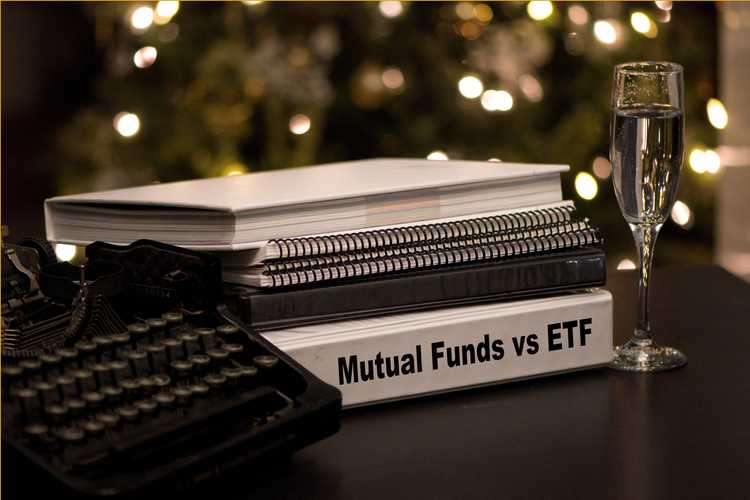Index funds are a popular investment as they offer a low cost way to invest in a fund that tracks a specific stock or bond index. They offer a number of advantages over actively managed funds.
What is an index fund?
An index fund is a mutual fund or ETF that tracks an index such as the S&P 500. The S&P 500 is a well-known stock market index for large-cap stocks that many investors view as a proxy for the U.S. stock market.
Index funds are passively managed investments that track a market index. The fund manager’s goal is to replicate the holdings of the underlying index. They will make changes in the fund’s underlying holdings periodically to match the stock or bond components of the index the fund is tracking. Some index funds may make these adjustments daily, others at less frequent intervals.
There are index funds that track well-known indexes such as:
- S&P 500
- Russell 1000
- Russell 2000
- Russell 3000
- MSCI EAFE
- Bloomberg U.S. Aggregate Bond
There are also index funds that track lesser known indexes that are in some cases run by the index providers themselves. These are firms that will construct an index and then license it to a mutual fund or ETF firm to use as the benchmark index for one of their funds.
Here are some examples of index mutual funds and ETFs.
S&P 500 index funds
| Fund | Mutual Fund | ETF | Expense Ratio |
|---|---|---|---|
Vanguard 500 Index Investor (VFINX) | X | 0.14% | |
Vanguard S&P 500 ETF (VOO) | X | 0.03% | |
Schwab S&P 500 Index (SWPPX) | X | 0.02% | |
SPDR S&P 500 ETF Trust (SPY) | X | 0.095% |
Total stock market index funds
| Fund | Mutual Fund | ETF | Expense Ratio |
|---|---|---|---|
Vanguard Total Stock Mkt Idx Inv (VTSMX) | X | 0.14% | |
Vanguard Total Stock Market ETF (VTI) | X | 0.03% | |
Fidelity Total Market Index (FSKAX) | X | 0.015% | |
Schwab U.S. Broad Market ETF (SCHB) | X | 0.03% |
Beyond these funds, there are a wide range of index mutual funds and ETFs across most asset classes of both stocks and bonds from which to choose.
How to invest in index funds
The two main ways to invest in index funds are via an index mutual fund or via an ETF that tracks an index.
Investors in an index mutual fund purchase shares based on the amount of cash they choose to invest in the fund. Cash is invested and the number of shares purchased is determined after the close of trading for that day based on the closing share price of the fund. ETF investors buy shares in the ETF during the trading day in the same way you would buy shares of a stock like Apple or IBM.
Investors should open a brokerage account with a custodian such as Vanguard, Schwab, Fidelity or another custodian. This will allow you to buy and sell mutual funds and to trade ETFs in taxable accounts as well as in an IRA.
There are a number of factors that investors should consider when selecting a broker to use. Trading costs are one factor. If you are going to be primarily using Vanguard index mutual funds and ETFs, it could make sense to open your account(s) on the Vanguard platform. There are no transaction fees to trade Vanguard mutual funds and ETFs on the Vanguard platform.
Trading Vanguard mutual funds or ETFs might trigger a transaction fee on another custodian’s platform, however. This holds true for other mutual fund and ETF families as well on different platforms. It pays to look at the transaction costs for funds or ETFs you are considering before deciding on a custodian for your accounts.
Many 401(k) plans offer index funds as an investment option for participants. S&P 500 or total stock market index funds are common choices. Mutual funds are more common in 401(k) plans than ETFs.
Index funds pro and cons
There are a number of pros associated with investing in index funds. These include:
Low expenses
Index funds are often among the lowest-cost funds within any given asset class. This is because of the passive nature of the investment process. Index funds are designed to track an index like the S&P 500 or the Russell 2000. Index fund managers are not stock pickers and the expenses associated with having a research team are not needed by the manager of an index fund.
Tax efficiency
Since index funds generally do less trading of their underlying holdings, they tend to generate lower levels of capital gains than their actively managed counterparts. Actively managed funds tend to generate more buy and sell transactions to reflect the latest research from the fund management staff. This can make index funds a solid option for taxable accounts.
Adherence to an investing style
Many investors use an asset allocation strategy to invest their money across various accounts in their portfolio. They may allocate a certain percentage to stocks, bonds and to cash. In the case of stocks, they may use a number of sub-asset classes such as large and small caps, international or perhaps growth and value within these asset classes.
Using an index fund will help ensure that this portion of their portfolio stays true to its asset allocation as index funds typically do not experience style drift. This is something that can often occur in an actively managed fund.
Diversification within the investment objective.
While the investing mission of an index fund will be confined to trying to replicate the holdings of the underlying stock or bond index, there is inherent diversification within the index and the asset class the index represents. For example, the S&P 500 consists of 500 individual stocks within the large cap blend asset class. The Russell 2000 index consists of 2000 small cap stocks within the small cap blend asset class.
Less portfolio maintenance.
Using index funds means that these funds will generally adhere to their investing style. While you will have to rebalance your portfolio periodically due to differing levels of gains and losses among holdings over time, the fact that index funds tend to experience little or no style drift makes the task of rebalancing easier.
Index funds do have some cons as well, including:
Concentrated holdings
Many indexes are market cap weighted meaning that the larger holdings in the fund comprise a large percentage of the fund’s value. For example, a recent look at the holdings of a popular index ETF tracking the S&P 500 showed that 28% of the fund’s assets were concentrated in the ten largest holdings.
That’s great when these holdings are doing well, it can serve to boost the value of the fund. However, it also works the same way when these holdings are not doing well. If they happen to underperform the market, it can serve to inordinately drag down the performance of the entire fund.
Lack of downside protection
Investors in an index fund will do as well or as poorly as the fund’s underlying index does. For example, holders of index funds that track stock indexes saw the value of their holdings decline 30% or more during 2008 when the stock market was impacted by the downturn surrounding the financial crisis.
You won’t beat the market
For those investors looking to outperform the markets, index funds are probably not the way to go. That said, however, many index funds have outperformed a majority of their actively managed peers over longer time periods.
For example, the Vanguard S&P 500 ETF (ticker VOO) placed in the top 9% of the large blend asset class for the ten years ending March 31, 2022. It placed in the top 16% for the trailing five years and the top 20% for the trailing three years ending March 31, 2022. This asset class includes both index and actively managed funds.
Not all index funds tracking the same index are equal
Just because a fund tracks the S&P 500 doesn’t mean that it is a solid choice. For example, the Rydex S&P 500 H fund (ticker RYSPX) carries an expense ratio of 1.65%. By contrast, the Vanguard 500 Investor fund (ticker VFINX) has an expense ratio of 0.14%. Looking at the average annual returns for each fund shows the impact of the difference in expenses.
For the five years ended March 31, 2022, the Vanguard fund’s average annual return was 15.84%. The average annual return for the Rydex fund over the same period was 14.02%. For an investor who invested $10,000 in each fund and held it for the five years ending March 31, 2022, the Vanguard investor would have accumulated $20,855 while the Rydex investor’s holding would only be worth $19,275. This is a difference of about 7.5% even though both funds track the same index. The difference is due to the difference in the expense ratios of the two funds.
How do index funds work?
Money invested in an index mutual fund or an index ETF is used by the fund manager to buy the stocks, bonds or other securities that make up the index the fund is designed to track. They will purchase stocks and bonds in proportion to those security’s representation in the index. Index funds are passively managed.
This is in contrast to actively managed funds where the fund manager makes affirmative decisions as to which stocks or bonds to include in the fund. This can often lead to frequent trades in and out of certain holdings within the fund. This frequent trading can serve to trigger capital gains which can result in a higher level of distributions than investors might see with an index fund.
Different indexes are rebalanced or reconstituted on a periodic basis at varying intervals. This means that certain stocks or bonds are added or replaced as index components at certain time periods during the year.
FAQs
Do index funds pay dividends?
The answer will vary by fund. This will depend on whether the underlying holdings in the index that the fund tracks pay dividends. For example, the iShares Russell 2000 ETF (ticker IWM) an index ETF that tracks the Russell 2000 index of small cap stocks has a yield of 1.02%, much of this yield is from dividends on some of the underlying stocks in the index.
What is a S&P 500 index fund?
An S&P 500 index fund is an index mutual fund or ETF that attempts to replicate the performance of the S&P 500 index. The manager of the fund will reshuffle the holdings in the portfolio to match those in the index at predetermined intervals.
The S&P 500, S&P 400 and S&P 600 indexes are rebalanced by S&P quarterly, but they will change the constituents (holdings) in these indexes as needed. Managers of S&P 500 index funds will decide how often they will rebalance their fund to match the index.
S&P 500 index mutual funds and ETFs are classified as large cap blend funds meaning they hold domestic large cap stocks. The style of these stocks is a blend of growth and value.
Are ETFs index funds?
Many ETFs are index funds, but not all of them are. There are a growing number of actively managed ETFs. Additionally there are a number of factor based ETFs. These are ETFs that invest based on a factor such as momentum or low volatility. These ETFs may track an index-like benchmark, but many investors would argue that they are at least quasi-actively managed.
Due to the way ETFs are structured, they are very conducive to use as an index fund. ETFs are often more tax-efficient than mutual funds, this can make an index ETF more tax-efficient than a mutual fund tracking the same underlying index.



